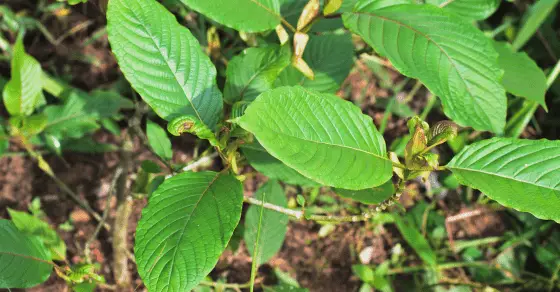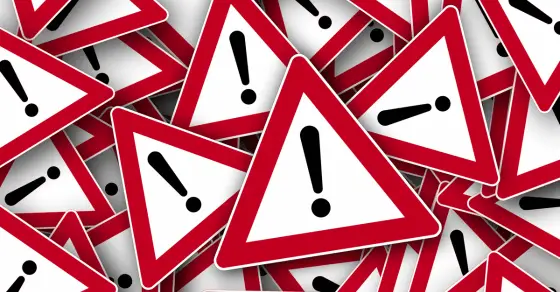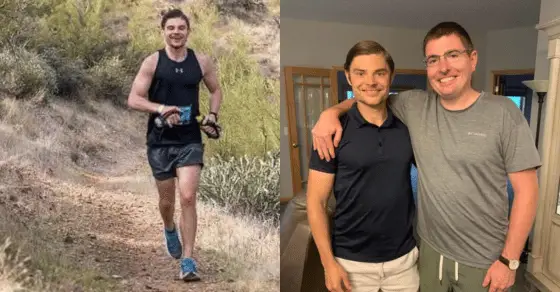When we hear about the sudden death of a young, healthy athlete, our minds instantly go to tragic accidents, rare heart conditions, or freak medical events. We don’t expect the cause to be something sold over the counter, marketed as a “natural supplement,” and promoted as harmless.
Yet that’s exactly what happened to Danny—a strong, vibrant young man, passionate about running, health, and life. His death is not just a personal tragedy for his loved ones but also a cautionary tale about a little-known substance called Kratom.
This is his story, and it’s one everyone needs to hear.
A Runner in His Prime
Danny was the kind of young man most people would envy. Fit, disciplined, and dedicated to endurance running, he lived a lifestyle that embodied strength and health. He was conscious about his body, his habits, and his choices.
When he suddenly collapsed on September 11th, his family was devastated and bewildered. There was no warning, no visible signs of illness. How could someone so healthy just stop breathing?
The autopsy revealed something shocking. While his heart had stopped, it wasn’t due to a hidden heart condition. Toxicology reports eventually provided the answer: Danny had died from acute mitragynine toxicity, the active compound in a substance called Kratom.
What Is Kratom?
Kratom comes from the leaves of a tropical tree native to Southeast Asia. For centuries, it has been used in its native regions in small doses as a traditional stimulant or in higher doses for pain relief.

In the West, Kratom has exploded in popularity over the last decade. It’s marketed as a “natural” supplement that can:
- Boost energy
- Enhance performance
- Elevate mood
- Relieve pain
It’s sold in powders, capsules, teas, and even drinks at gas stations, vape shops, and online stores. The appeal is obvious: a natural, legal alternative to pharmaceuticals. But here’s the problem—natural doesn’t mean safe.
The Dark Side of Kratom
The same compounds that give Kratom its stimulating or pain-relieving effects also act on the brain’s opioid receptors. That’s right—the same receptors triggered by highly addictive drugs like heroin and oxycodone.
This means Kratom can:
- Be highly addictive.
- Cause irregular heart rhythms.
- Trigger respiratory depression (slowed or stopped breathing).
- Lead to sudden cardiac arrest.
Danny’s doctor explained it simply: he likely passed out, stopped breathing, and his heart soon followed. The only small comfort is that he did not suffer.
But the bigger truth is haunting—this can happen to anyone. Even someone as healthy and disciplined as Danny.
The Toxicology Puzzle
One of the scariest parts about Kratom is how unpredictable it is. Toxicology reports on Kratom are notoriously inconsistent. Levels can range from 5.6 to 29,000, with no clear threshold that separates “safe” from “lethal.”
Danny’s report showed a level of 190, which his doctor said is consistent with Kratom-related deaths. Yet there have been deaths at levels as low as 20.
This means there’s no way to know what amount might tip the scale from “stimulant” to “fatal.” It doesn’t take a massive overdose. Sometimes, a normal dose is enough to cause death.
Why “Natural” Doesn’t Mean “Safe”
Marketers love the word “natural.” It creates an illusion of safety, as though nature itself is harmless. But history tells us otherwise.
- Poisonous mushrooms are natural.
- Hemlock is natural.
- Cyanide is natural.
“Natural” simply means it comes from the earth—not that it’s good for the body. Kratom may be a plant, but it has powerful psychoactive and physiological effects that can rival opioids.
For Danny, what was sold as a “natural energy booster” turned out to be a silent killer.
A Broken System
How can something this dangerous be so widely available?
The answer lies in the unregulated supplement industry. In the United States, supplements are not held to the same standards as pharmaceuticals. That means:
- No required clinical trials before selling.
- No standardized dosage or safety labeling.
- No consistent warnings about risks.

In fact, in all but six states, you can walk into a corner gas station and buy Kratom just like you would a soda or a snack.
Behind this availability is also a powerful lobby working to keep Kratom legal and unregulated. Families who have lost loved ones to Kratom report that their tragedies are often minimized or dismissed. Many deaths are never officially attributed to Kratom.
But Danny’s story—and the stories of countless others—prove the danger is real.
A Family’s Mission
Danny’s family has chosen to be transparent. They don’t want to hide the truth or soften it. They believe Danny would want to protect others, just as he advocated for people struggling with addiction during his life.
Now, they are working to raise awareness. They are urging parents, siblings, and friends: talk to your kids, talk to your loved ones, talk to your community.
If a supplement that is marketed as “natural” and “safe” can take down a young endurance athlete in peak condition, it can happen to anyone.
Lessons We All Need to Learn
Danny’s tragic passing highlights some urgent truths:
- Not all supplements are safe. Just because something is legal or natural doesn’t mean it’s harmless.
- Education matters. Most people don’t know what Kratom is, let alone how dangerous it can be.
- Regulation is lacking. Until the supplement industry is held to higher safety standards, stories like Danny’s will continue.
- Awareness can save lives. Talking openly about substances like Kratom may prevent another family from experiencing this heartbreak.
Moving Forward
Danny’s story is painful to read. It’s painful to write. But it’s a story that needs to be told.
A young, vibrant, health-conscious runner lost his life not to drugs on the street, not to hidden disease, but to something sold as a harmless, natural supplement.
His family is left with memories, heartbreak, and a mission: to make sure others are warned before it’s too late.
If you take only one thing away from Danny’s story, let it be this: Do not be fooled by the word “natural.” Question everything. Do your research. And talk to the people you love.
Because the truth is, Danny’s tragedy could happen to anyone. And if his story can save even one life, then his strong, giving spirit lives on.





